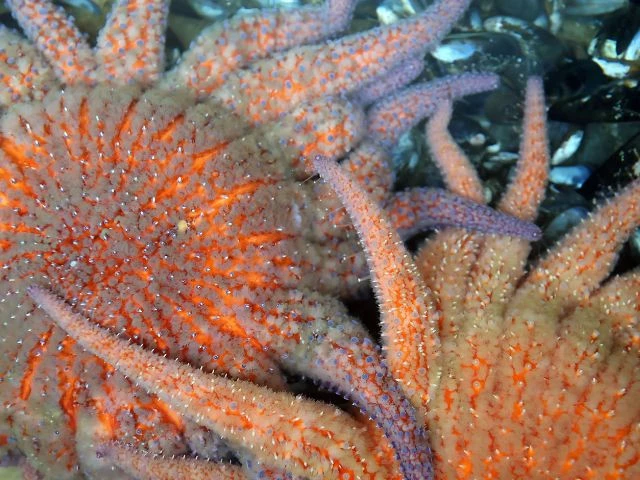Cool water found to shield starfish from deadly wasting disease
Findings suggest that temperature and environmental factors play a key role in protecting sea stars from the diseases

A mysterious disease that has plagued sea stars for more than a decade may have met its match in the frigid waters of British Columbia's fjords.
Researchers have discovered that sunflower sea stars, which are critically endangered due to sea star wasting disease (SSWD), are thriving in these cooler waters, providing valuable insight into how temperature may offer protection from the disease.
The study, published in April in the Proceedings of the Royal Society B, found that the sunflower sea stars were healthier in the fjords compared to those in other areas.
This discovery is significant because the species, once abundant along the Pacific coast from Baja, California to Alaska, has seen a 91% decline due to the deadly disease that causes grotesque body contortions and rapid death.
The SSWD outbreak first emerged in 2013, and scientists have struggled to pinpoint the cause. While initial research pointed to a virus, subsequent studies have been inconclusive.
Ian Hewson, a marine ecologist at Cornell University, says that microbial or environmental causes have also failed to provide answers.
The sunflower sea star is a crucial predator in marine ecosystems, particularly in controlling sea urchin populations. Without them, sea urchins can decimate kelp forests, which provide habitats for many marine species.
The discovery of sunflower sea stars thriving in cold waters may offer hope for restoring the species and its ecosystem role.
The finding was made by marine ecologist Alyssa Gehman, who, along with her team, surveyed the fjords of British Columbia from 2018 to 2023.
They found that while sea stars in the fjords showed signs of SSWD, the populations were healthier overall, with more adults surviving compared to populations on the outer islands.
The fjords’ cooler, deeper, and saltier water appeared to offer a refuge from the disease, suggesting that temperature could be a protective factor.
The study also highlighted the importance of environmental conditions in shaping sea star health. Sea stars in the fjords were found in areas where snow melt created a layer of fresher, cooler water, in contrast to the warmer waters of the outer islands where the sea stars struggled to survive.
The findings are a breakthrough in understanding SSWD and could provide a clue in determining the environmental conditions that either promote or prevent the disease.
Researchers now believe that warmer-than-normal waters increase the likelihood of disease outbreaks, while cooler temperatures may slow or prevent its spread.
Alyssa Gehman is continuing to investigate the interplay between temperature, microbial environments, and the progression of SSWD. "We've restarted the question from square one on what causes this disease," she said.
This discovery offers new hope for sea star conservation and may lead to further research on how to protect vulnerable marine species from the devastating effects of climate change and disease.























COMMENTS
Comments are moderated and generally will be posted if they are on-topic and not abusive.
For more information, please see our Comments FAQ